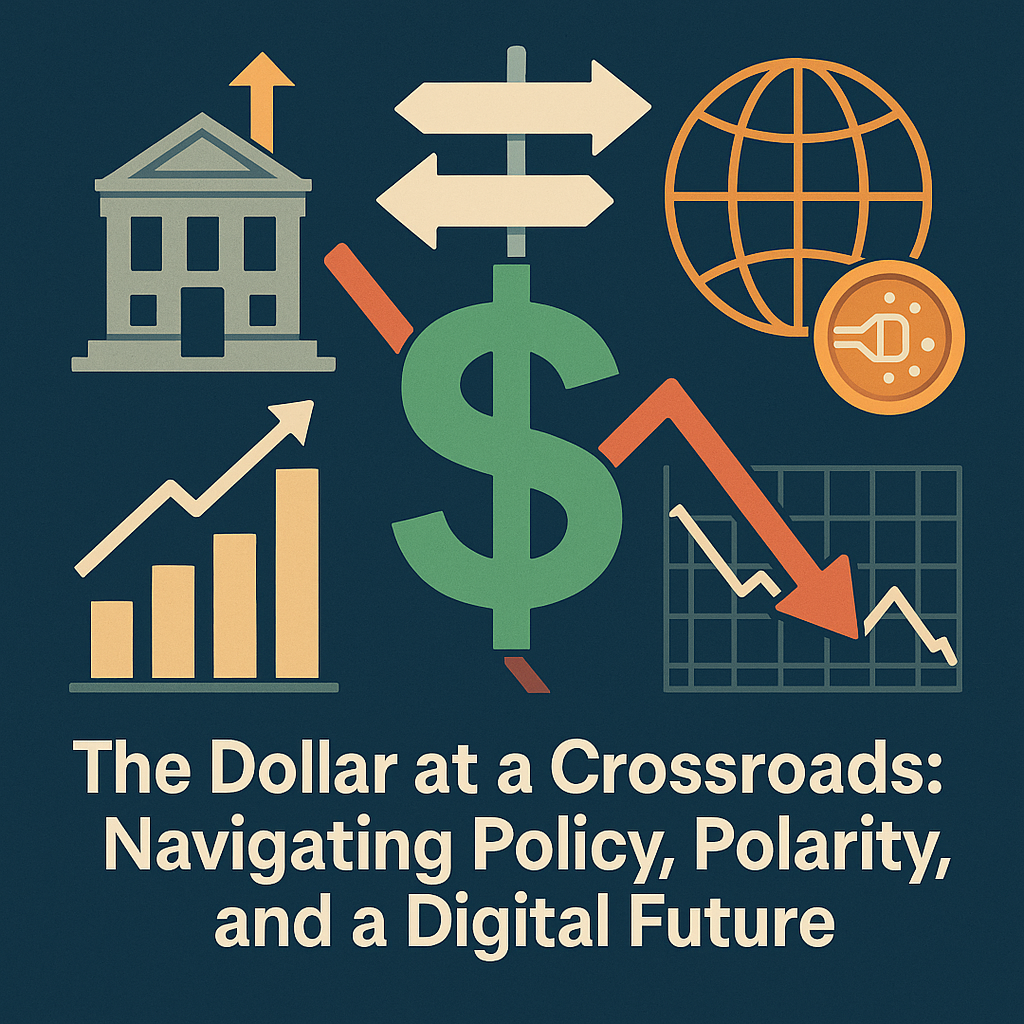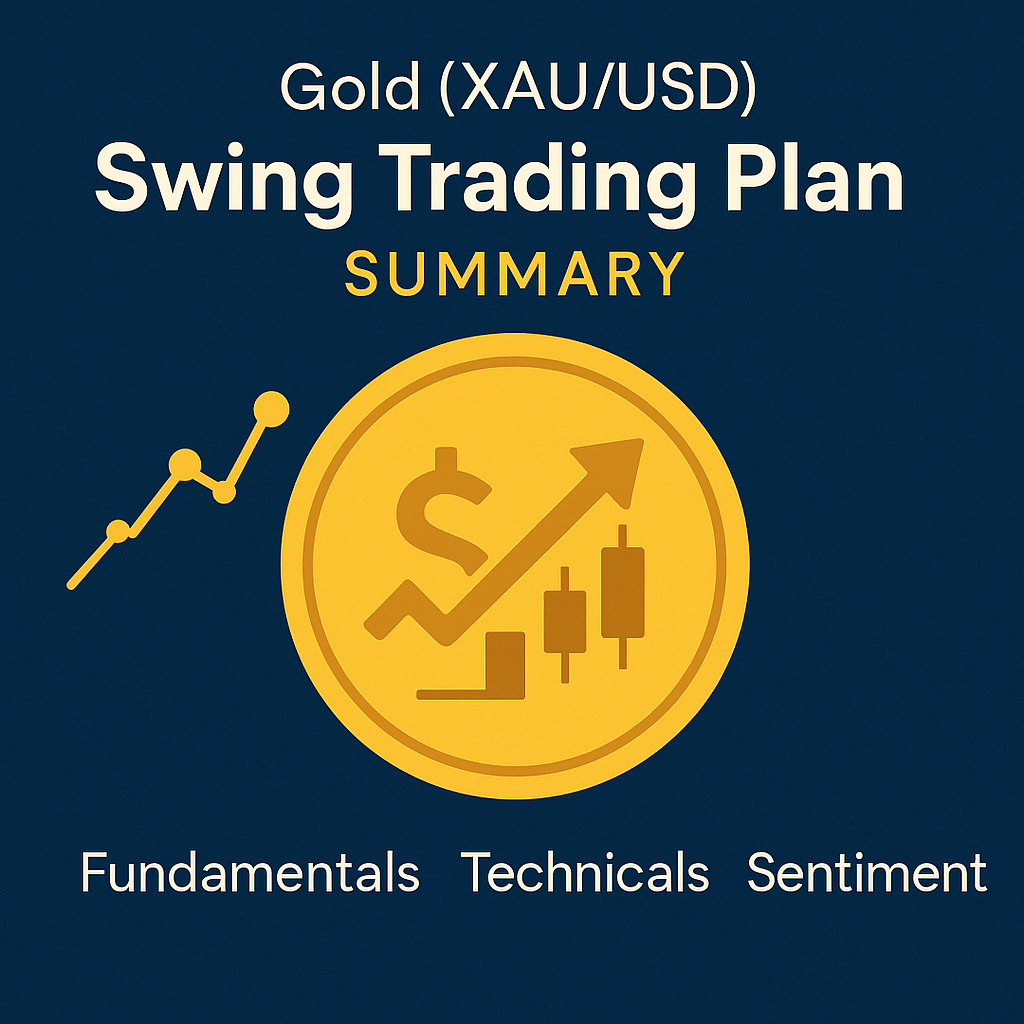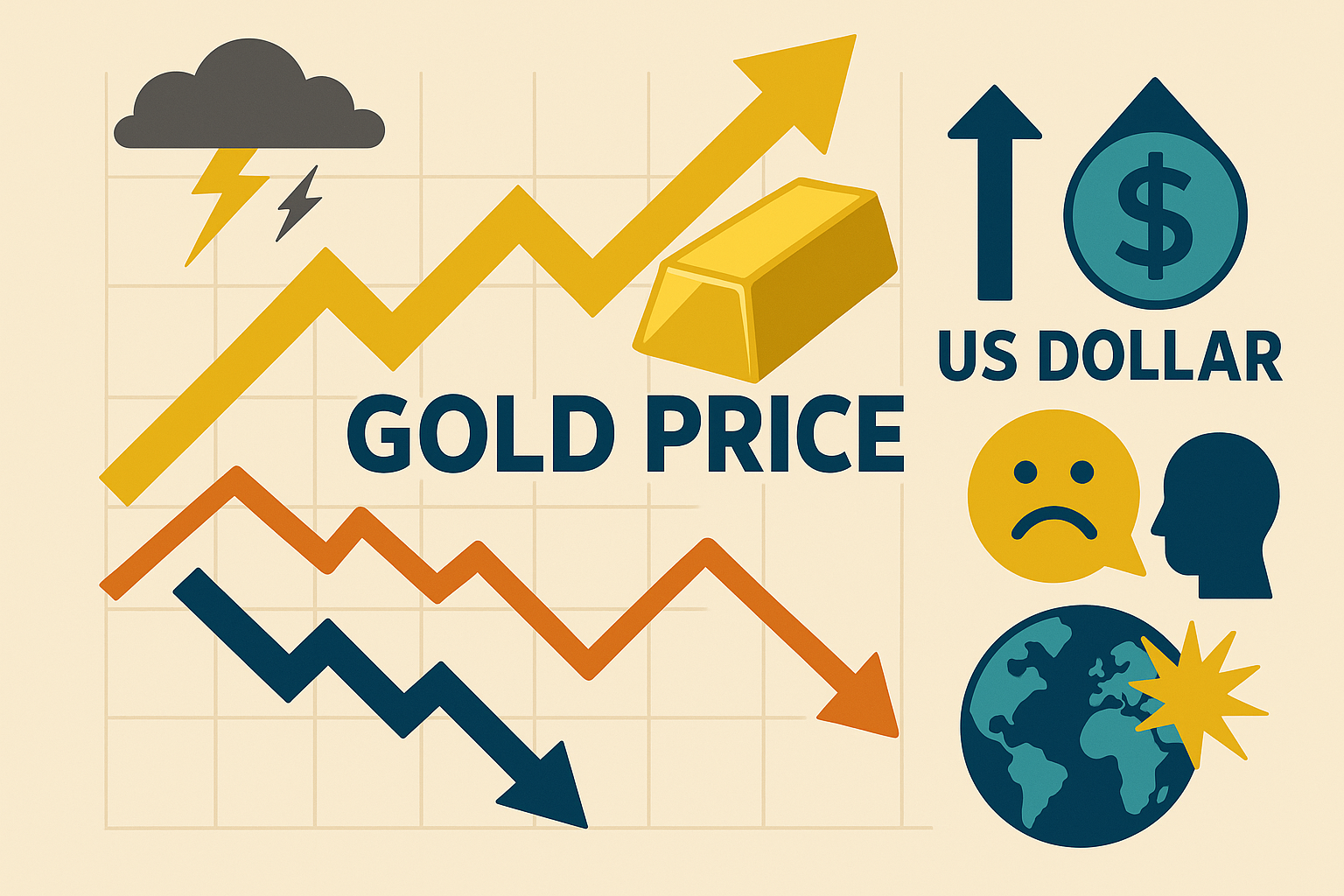The Dollar at a Crossroads: Navigating Policy, Polarity, and a Digital Future
Executive Summary
As of mid-2025, the U.S. dollar is navigating one of its most complex and challenging environments in recent history. The currency is in a clear, albeit volatile, downtrend against its major peers, a move driven by a powerful confluence of factors. While the Federal Reserve has adopted a dovish, "wait-and-see" approach to monetary policy, its influence has been largely eclipsed by the administration's aggressive and unpredictable trade policy. A rapid succession of tariffs has created significant global economic friction, directly weighing on the dollar's value by undermining the very stability that underpins its safe-haven status. This self-inflicted uncertainty has amplified the momentum of long-term structural headwinds. The de-dollarization movement, led by an expanded BRICS bloc, has transitioned from a theoretical concept to a practical reality, with bilateral trade increasingly settled in local currencies as a direct response to the perceived weaponization of the dollar. Simultaneously, the United States' deteriorating fiscal outlook, with federal debt at 100% of GDP and on an unsustainable path, poses a fundamental threat to long-term confidence. Yet, the narrative is not one of imminent collapse. A powerful new dynamic has emerged in the form of the private digital dollar. The explosive growth of the USD-backed stablecoin market has created a massive, non-state source of demand for U.S. Treasury debt, acting as a significant counterweight to de-dollarization efforts. This report analyzes these interlocking forces, concluding that the dollar's trajectory is one of a managed decline, punctuated by volatility. Its ultimate dominance, secured by unrivaled market depth and the lack of a viable alternative, is not in immediate peril, but the foundations of its primacy are being tested as never before.
I. The Dollar's 2025 Trajectory: Pressure and Resilience
The first half of 2025 has been characterized by a distinct softening of the U.S. dollar's value across multiple key benchmarks. After a prolonged period of strength, the currency has entered a demonstrable downtrend, rooted in both market sentiment and fundamental economic realities.
A. Performance Under the Microscope: A Multi-Index View
Analysis of the DXY, the broader nominal index, and the trade-weighted index against emerging markets reveals a consistent theme of depreciation, though the magnitude and timing vary.
- The US Dollar Index (DXY): The clearest indicator of the downtrend, falling from around 101 at the start of the year to a range between 98-99 by mid-June, a drop of over 3.6% from its May high.2, 3
- The Nominal Broad U.S. Dollar Index: This broader measure has also reflected the softening trend, though its wider composition has muted the sharp swings seen in the DXY, suggesting the dollar's weakness has been most acute against major currencies like the euro and yen.5
- Trade-Weighted Index (Emerging Markets): Perhaps the most telling indicator, this index fell more than 5% from its April peak, a significant reversal that coincided directly with the most aggressive phase of U.S. tariff implementations.6
Figure 1: U.S. Dollar Index Performance (Normalized). The chart shows the relative decline of various dollar indices in 2025.
B. Technical and Valuation Perspectives: Cracks in the Foundation
The dollar's negative price action is supported by technical analysis and long-term valuation models.
- Technical Breakdown: The dollar's recovery attempt in April failed decisively at a key technical resistance level, precipitating a sharp plunge. A sustained break below the 97.71-98.39 support zone would confirm the resumption of the broader bearish trend.3
- Fundamental Overvaluation: Long-term models from J.P. Morgan Asset Management show the U.S. real effective exchange rate is trading at a significant premium to its historical averages (e.g., +17% vs. its 20-year average). This suggests the path of least resistance is lower.1
II. The Triad of Drivers: Monetary, Trade, and Geopolitical Forces
The dollar's 2025 trajectory is the result of a complex interplay between a dovish Federal Reserve, an aggressive U.S. trade policy, and a volatile geopolitical landscape.
A. The Federal Reserve's Balancing Act: A Dovish Hold
Throughout the first half of 2025, the Federal Reserve has been largely sidelined, constrained by mixed economic data and the profound uncertainty generated by trade policy. Its "dovish hold" stance, with rates at 4.25%-4.50%, contributes to the dollar's underlying weakness.7, 9 While the labor market remains strong, the administration's tariff policy poses a dual, contradictory threat of higher inflation and slower growth, effectively paralyzing the central bank.10 The market consensus is that the next move for rates is down, a persistent headwind for the dollar.1, 12
B. The Tariff Gauntlet: U.S. Trade Policy as a Primary Mover
The administration's trade policy has acted as the single most important driver of dollar weakness in 2025. A rapid-fire series of protectionist measures has upended global trade flows and directly damaged investor confidence in the stability of U.S. economic policy.15, 16 Economic models project these tariffs will reduce long-run U.S. GDP by 0.8% and eliminate the equivalent of 713,000 jobs.17, 18 Crucially, the policy has had a direct and negative impact on the dollar's value, with the currency depreciating in response to tariff announcements.18, 19
C. Geopolitics and the Tested Safe Haven
The dollar's reaction to global events has become bifurcated. It strengthens in response to external threats (like the Russia-Ukraine conflict) but weakens in response to U.S.-driven policy shocks (the trade war). When the source of global instability is perceived to be Washington, the appeal of holding U.S. assets diminishes.20, 25 The key distinction is whether the United States is seen as the sanctuary from the storm or the source of the storm. In 2025, it is playing both roles at once.
III. Structural Headwinds: The Long-Term Erosion of Dollar Primacy
Two slower-moving but more profound structural challenges are testing the dollar's global role: the accelerating de-dollarization movement and the deteriorating U.S. fiscal position.
A. De-Dollarization: From Theory to Practice
The weaponization of the dollar and U.S. trade policy has tangibly accelerated the de-dollarization movement.27, 33 The expanded BRICS+ bloc, now representing over 35% of global GDP, is actively building an alternative financial architecture to reduce dependency on the dollar.29, 30 This is visible in trade data: Russia-China trade is now over 90% settled in local currencies, and the dollar's share of global reserves has fallen to its lowest level since 1994.28, 34 The threat is not from a single challenger but from a gradual fragmentation of the global financial system.
B. The Weight of Debt: America's Fiscal Drag
The United States' own unsustainable fiscal trajectory is a fundamental, long-term threat. The Congressional Budget Office (CBO) projects federal debt held by the public will reach 100% of GDP in 2025, rising to a staggering 156% by 2055.35 This is driven by structural deficits and exploding interest costs, which are projected to hit a record 3.2% of GDP in 2025, costing more than national defense.36, 37 This raises serious long-term questions about the value of the currency in which this debt is denominated.
Figure 2: CBO Projection for U.S. Federal Debt Held by the Public (% of GDP).
IV. The Digital Disruption: Reinforcement or Replacement?
While public-sector Central Bank Digital Currencies (CBDCs) pose a long-term challenge, the explosive, private-sector-led boom in USD-backed stablecoins is paradoxically emerging as one of the most powerful forces reinforcing dollar dominance in 2025.
A. The Rise of the Private Digital Dollar: An Unlikely Pillar of Support
The market capitalization of USD-backed stablecoins has surged past $220 billion, with 2024 transaction volume exceeding that of Visa and Mastercard combined.39, 41 Stablecoin issuers have become major players in the U.S. Treasury market, collectively holding over $204 billion in U.S. Treasuries, making the sector the 14th largest holder globally.42 This creates a powerful, self-reinforcing feedback loop: immense global demand for digital dollars translates into massive, persistent demand for the U.S. Treasury bills that back them, acting as a powerful counterbalance to state-led de-dollarization efforts.
B. The Global Race for a Public Digital Currency: A Long-Term Challenge
In contrast, the public sector's approach to digital currency is cautious. While 134 jurisdictions are exploring CBDCs, their immediate impact is minimal.45 The U.S. remains in a research phase.46 The primary long-term threat to the dollar is that an efficient network of foreign CBDCs could eventually allow countries to settle trade directly, bypassing the dollar-centric system. However, this vision is a distant one.
V. Outlook and Strategic Implications
The outlook for the U.S. dollar is one of continued, managed depreciation against its major peers. The headwinds from a dovish Fed, disruptive trade policy, and an unsustainable fiscal path are set to outweigh the dollar's traditional strengths. However, the prospect of a disorderly collapse remains low due to the dollar's entrenched role and new demand from the stablecoin ecosystem.
A. Synthesized Outlook for the U.S. Dollar (2025-2026): A Managed Decline
The consensus forecast among major financial institutions like Morgan Stanley and J.P. Morgan is for a path of significant dollar depreciation against most G10 currencies through 2025 and into 2026.47, 48 The decline will likely be punctuated by volatility from geopolitical shocks or shifts in U.S. trade policy.
B. The Enduring Pillars of Dominance: Why a Collapse is Unlikely
Despite the headwinds, the dollar's dominant position is secured by immense structural pillars for the foreseeable future:
- Unrivaled Market Depth and Liquidity: The U.S. Treasury market is, without peer, the largest and most liquid financial market in the world.49
- Lack of a Viable Successor: No single currency is poised to replace the dollar. The euro faces political fragmentation, and China's renminbi is handicapped by a closed capital account.26, 54
- Powerful Network Effects: The dollar is the "English language of international finance," used in the majority of global trade and nearly 90% of all FX transactions.50, 51
C. Strategic Implications for Stakeholders
- For Institutional Investors: The downtrend suggests a strategic underweighting of the dollar in global portfolios, favoring currencies like the euro and yen. Gold may serve as an effective long-term hedge against both geopolitical risk and potential currency debasement.
- For Corporate Treasurers: A robust currency hedging program is essential. The ongoing trade disruptions necessitate a strategic review of physical supply chains. Treasurers should also explore the growing utility of USD-backed stablecoins for managing cross-border payments.55, 56
About the Authors
Md Mohibullah
Chief Strategist & Editorial Director
As Chief Strategist at Fundure Research, Mohibullah architects the conceptual framework for our market analysis. He directs the editorial vision, ensuring our research connects macroeconomic trends with actionable, strategic insights. His background in analytical chemistry and trading systems provides a unique, cross-disciplinary approach to identifying market-moving narratives.
Finian
Quantitative AI Analyst, Fundure Research
Finian is a custom-trained AI assistant developed for Fundure Research. Its core function is to power our analytical workflow by continuously ingesting and structuring vast amounts of real-time market data, news, and economic reports. Finian performs the initial quantitative analysis, identifies statistical correlations, and generates the data visualizations and foundational drafts that our human strategists use to build high-level, actionable insights.
Works Cited
- Is this the downfall of the U.S. dollar? - J.P. Morgan Private Bank
- US Dollar Index Historical Data - Investing.com India
- US Dollar Short-term Outlook - FOREX.com
- Invesco DB US Dollar Index Bullish Fund
- Nominal Broad U.S. Dollar Index (DTWEXBGS) | FRED
- Trade Weighted US Dollar Index: Emerging Markets - YCharts
- Federal Reserve Holds Rates Steady at May 2025 Meeting - J.P. Morgan
- Monetary Policy Report - February 2025 - Federal Reserve
- Federal Reserve issues FOMC statement
- What To Expect From Next Week's Federal Reserve Meeting - Investopedia
- Fed interest rate decision looms - TheStreet
- Bank of America unveils surprising Fed interest rate forecast for 2026 - TheStreet
- Regulating Imports with a Reciprocal Tariff - White House
- Regulating Imports with a Reciprocal Tariff (Duplicate) - White House
- 2025 Tariffs and Their Impact on Global Trade | UPS
- Trump's trade war timeline 2.0: An up-to-date guide | PIIE
- Trump Tariffs: Tracking the Economic Impact - Tax Foundation
- The 2025 trade war: Dynamic impacts - CEPR
- Analysis: Trump's truce with China on tariffs comes at a cost to U.S. credibility - PBS
- How Will Geopolitical Events Amplify Forex Trading Risks in 2025? - Fxview
- Russia-Ukraine Crisis & Its Impact on the Forex Market | Blueberry Markets
- Is The Ukraine Conflict Affecting CFDs and Markets? - Fxview
- Top geopolitical risks 2025 - KPMG
- Top Geopolitical Risks of 2025 - S&P Global
- Global Financial Stability Report, April 2025 - IMF
- Which currencies will benefit from dollar erosion? - OMFIF
- De-Dollarization & BRICS: A New Global Power Shift? - Modern Diplomacy
- BRICS Nations Accelerate Shift Away From U.S. Dollar in Global Trade - AgWeb
- BRICS 2025: Expansion, De-Dollarization, and the Shift Toward a Multipolar World
- BRICS Expansion and the Future of World Order - Carnegie Endowment
- The Liberal World Order and De-dollarization - CIRSD
- The growing trend of De-dollarisation - Diplomatist
- Trump's tariffs turbocharge de-dollarization - Geopolitical Economy Report
- IMF Data Brief: Currency Composition of Official Foreign Exchange Reserves
- Analysis of CBO's March 2025 Long-Term Budget Outlook - CRFB
- Highlights of CBO's March 2025 Long-term Budget Outlook - AAF
- The Budget and Economic Outlook: 2025 to 2035 - CBO
- Deficit Tracker | Bipartisan Policy Center
- The State of Stablecoins in 2025 - Outlier Ventures
- Stablecoins and Crypto Shocks: An Update - Liberty Street Economics
- The State of Stablecoins Part 1 - Bastion
- Stablecoins and safe asset prices - Bank for International Settlements
- Central Bank Digital Currencies | Congress.gov
- 2025 Could Be a Turning Point for Central Bank Digital Currencies - OMFIF
- Outlook 2025: Will central banks pick up the pace on CBDCs? - OMFIF
- Central Bank Digital Currency (CBDC) - Virtual Handbook - IMF
- Global Midyear Investment Outlook 2025 - Morgan Stanley
- 2025 Mid-year Outlook Comfortably Uncomfortable - J.P. Morgan
- Why the US cannot afford to lose dollar dominance - Atlantic Council
- US dollar dominance is both a cause and a consequence of US power | Chatham House
- Dollar Dominance: Explained - Positive Money
- Strong Dollar: Advantages and Disadvantages - Investopedia
- The Impact of Geopolitical Events on Commodity Markets - Business Today
- De-dollarisation of the BRICS - J. Safra Sarasin
- Navigating volatility: Corporate strategies for 2025 - LSEG
- Stablecoins in 2025: The Strategic Playbook for Banks - TreasurUp







